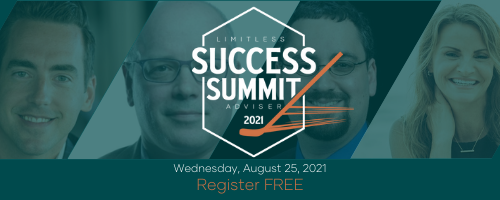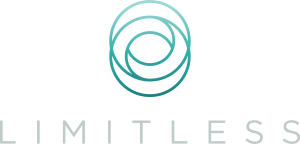Shake up a snow globe and the world inside experiences instant upheaval, waiting for the flakes to settle and a new reality to be revealed. This pandemic demands that advisors prepare for the same level of strategic upheaval to ensure they thrive in an unsettled world.
Somewhere along my world travels, I started collecting snow globes for my children. I remember thinking how snow globe life can be turned topsy-turvy and things reset in random ways.
Had you told me then I’d be recalling that snow-globe memory as I write an article about living inside one, I wouldn’t have believed you.
And yet, here we are.
I’ve received more than a few calls from solo advisors to senior leaders looking to re-frame their strategies and re-tool their businesses in response to this sudden shake-up. They are coming to grips with the reality that the strategies that served them well in the comfort of an 11-year bull run will not meet the demands of the uncertain future we face.
To help you find your footing, I offer five shifts to shake-up your thinking in a snow-globe style world.
Shift #1: What’s happening, really?
The comfortable conditions of the 11-year bull market are behind us and the unfolding global pandemic holds us in a state of collective uncertainty.
Advisors are struggling to keep pace with increased service demands while having to reimagine their marketing and prepare for the possibility of a prolonged economic and market downturn.
Enterprises that support these advisors face no fewer challenges. Looking for new ways to capture attention, improve adoption and drive growth in a socially-distanced world is on everyone’s agenda.
These challenges are obvious and felt by many, but what about the subtle yet significant influences at play? With these invisible influences a richer set of information emerges, one that considers the most important input of all, the human condition.
A simple inquiry into what is really happening on the human plane reveals:
- People are being forcibly confronted with their financial lives and questions abound;
- People crave connection and the familiar, yet will live with unfamiliar distance;
- Comfort with social interaction will vary until greater certainty exists; and
- Humans hate uncertainty and therefore crave reassurance.
Including these human conditions in an assessment of how to pivot your marketing during social distancing, a few potentially important observations surface.
Many firms are making a pivot to webinar marketing. While reasonable, it’s also not unique, with more than a few firms making the same pivot. This, in turn, creates a crowded environment that makes differentiation more difficult, and thus more costly, particularly for those lacking brand power.
People are spending inordinate amounts of time inside, staring into their computer screens – growing used to and weary of it. Webinars don’t sufficiently address the human conditions.
Ignoring these influences means your seemingly good plans face resistance, require more effort and don’t produce the desired results. The more your plans address the human influences, the less your time and marketing budget will have to make up for it.
The truth about why we don’t take a broader perspective is that our brains are hard-wired to follow conditioned thinking during periods of stress – the times we most need new and better ones.
Shift #2: Re-think everything
The survivors of disruptive events are those most able to trade their conditioned ways of thinking for unconventional ones better suited to the new environment.
Re-thinking everything can benefit everyone. In my coaching work with Michael Kitces, one day he shared that he had received a letter of resignation from a key team member. As it would be for anyone, this was a significant event that came with some not-so-insignificant stressors. Michael shared his download on the situation, after which I paused him.
“Michael,” I asked, “What would it take to make this the best thing that could have happened to your business?”
He met this question with an uncharacteristic pause. Within such questions, you play a well-intentioned trick on your brain, re-directing your hard-wired survival response to focus on new, more empowering problems from which to save you.
When you ask better questions, you get better answers.
By our next call, Michael had clarity on how how he could not only to address the staffing shift but use this inflection point to advance his strategy in ways that turned far-off goals into near-term possibilities.
As Michael tells the story, that first question and those that followed helped him make his “biggest shifts ever” including meaningful pivots to his business strategy, record revenue growth and, perhaps most important, being more fulfilled and excited than ever about his work.
Michael’s results are a direct reflection of his willingness to re-think everything and step, often uncomfortably, into better questions.
Shift #3: New conditions for success
One of the most effective questions I ask clients when setting a strategy or problem-solving is, ”What are the conditions for success?” For any strategy to succeed in a storm, it must be clear on the current conditions and able to quickly identify and adapt to changing ones.
Whether your event strategy normally offers 100 or 10,000 interactions with prospects each year, your new strategy must find new ways to replicate the results that took place in old conditions.
One condition for success in an event strategy is engagement, gained through face-to-face interaction. If your team is simply replacing in person events with online ones – and not designing deeper to harness the human conditions in your new activities, you well be missing vital information that influences your strategy and makes radically better use of your resources.
I analyzed one firm’s sales data and showed that they had the highest conversion rate with advisors they spoke to on the first day of conferences. These advisors were qualified and informed and had merely been waiting for face time to ask their questions.
Deconstructing every phase of the sales cycle to identify what really worked – in this case personal interaction to answer those final questions and tip the scales on the trust equity needed to make major buying decisions – allowed them to quickly adapt their engagement strategy to better replicate the new conditions for success.
In this new landscape, one advisor saw an opportunity. We agreed he should be the first phone call his COIs make to get their clients’ questions answered. We created a ”first phone call campaign,” positioning him as ”the guy to call” when clients had questions about their financial lives. He offered clients of the COI, including ones that didn’t meet his profile, a free 20-minute phone call to answer any questions they may have about their financial lives – helping keep his COI relationships from cooling and finding new ways to add value and connect with clients.
Faced with unstable conditions and mounting uncertainty, advisors and leaders across the profession must re-think everything as they forge a new path forward.
Shift #4: Make purposeful pivots
In favorable markets, many firms’ strategies could aptly be described as ”hurling Jell-O.” Past markets allowed this comfortable cushion, but in a future where each decision can make or break your business, such inefficiencies cannot be tolerated.
With your newly expanded thinking, re-consider your strategies within this framework: Every move must move the needle in a meaningful way.
One advisor client, heavily reliant on COI referrals for growth, is making purposeful pivots in this disruption to differentiate his firm and come out the other side with greater market share.
That pivot is to find new ways to maintain old connections in a socially distant world. They are looking to rent a vacant lot and erect a life-size inflatable movie screen to host a drive-in theater for clients, COIs, and COI’s clients once a month during the summer.
The new event addresses the subtle human conditions and checks the box on creating connection. Few things are as comfortable and familiar as the nostalgia of drive-ins and movies we enjoy.
In another example, the CEO of an influential firm had three offerings serving the same audience. He was frustrated they hadn’t hit their growth goals in spite of high demand for his service. One of the offerings hit its growth target for the year in four months, but he and his small team were overwhelmed and couldn’t keep up.
We talked through the shifts above. I advised him to make a purposeful pivot and refocus on his strongest offering, the growing product line. He explained how his three-pronged strategy made sense, but struggled to find an answer when I asked him why, if it made so much sense, wasn’t it working for him?
When we spoke 10 days later, he shared he had put two product offerings on standby to focus 100% of resources on the lead offer. Already, he said, the results were “total magic.”
Shift #5: Take the next best step
If you read between the lines, you’ll see the heroes in these stories armed themselves with the mindset to apply the most important shift of them all: Take the next best step.
One advisor was feeling overwhelmed by the March surge in client conversations, just as her children began home-schooling in her new office. Having been through 2008, she did not wish to repeat that experience. The demands on her personal life only compounded the stress.
She was stuck behind an endless wall of worry, feeling inadequate in her ability to meet the colliding demands of her work and home life. With her reserves running low, feeling guilty and overwhelmed, she didn’t know where to begin.
When overwhelmed by stress, your brain’s cognitive centers shut down, turning to your survival instincts for direction. Taking micro actions shifts your brain out of survival mode and into a positive forward-focused state. From this place, you can make better make decisions that move you forward, however incrementally.
To stop her from being overwhelmed, we got clear on what she needed to solve for, in order to set down what was really stopping her, so that she could do the best thing to avoid staying stuck – take a step in the direction she wanted to go.
In full disclosure, we skipped the low-quality question, ”How am I going to call all these clients?” and instead opted for a better one, ”What would it take to make all my clients feel important, cared for and well-served within 24 hours (so that I can spend the weekend with my family without guilt)?”
Answering that question required her brain to solve a newer, high-quality problem of connecting with clients quickly and personally. In this frame, the next step didn’t take long to surface.
She recorded a Zoom video explaining the state of affairs, sharing how she and the team were addressing the situation, when clients would hear from her personally, and sending her best wishes for their health and well-being.
Her message conveyed warmth and empathy, informed clients and advised them what to expect. Within 24 hours it was delivered and clients had personal calls scheduled to review their situations in an orderly fashion based on urgency in the days that followed.
One CEO, frustrated with his leadership team for thinking too small, came to realize he hadn’t created an environment that rewarded unconventional thinking or failure – a fatal combination in uncertain times. Pressed with the demands of responding to the crisis, his team was missing vital opportunities to organize themselves around a strategy that could improve adoption and grow market share in material ways.
Sticking to their conditioned patterns of thinking and engaging were hamstringing this team’s ability to swiftly re-align their strategy to better meet the changing times.
After a good deal of debate over potential paths, I asked the leadership team if they were ready to stop struggling and use the shake-up to their advantage. Their next best step, we agreed, was simply to stop doing what wasn’t working.
Next, we acknowledged they were stuck in old debates with too little new information.
Building on that first step of ending their fruitless discussions, I tasked the executive team to each brainstorm three big ideas for a $100,000 initiative. The ideas considered the thinking laid out in this article, projected seven-figures in new-revenue growth and had to be able to launch within 100 days. Submissions were made anonymously to ensure the executives held nothing back. A healthy, robust process for vetting ideas followed and they got the clarity they needed. More important, they have a stronger leadership team.
Big or small, taking the next best step isn’t magic, it’s a brain hack to help you shift from a negative, disempowered state (a “stress-state”) to a more positive, empowered one (a “success-state”). From here, everything is figure-out-able.
Whether dispensing advice or developing business plans, your fundamental work is to think. As we collectively gaze into an uncertain future, my best advice for surviving these times is shake up your thinking. When you get paid to think, the quality of your thoughts matters.
Get clear, get focused and get to work.






